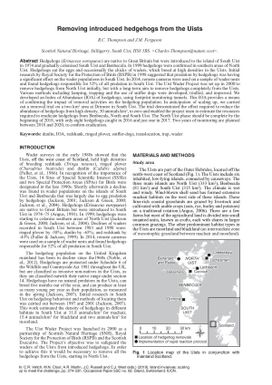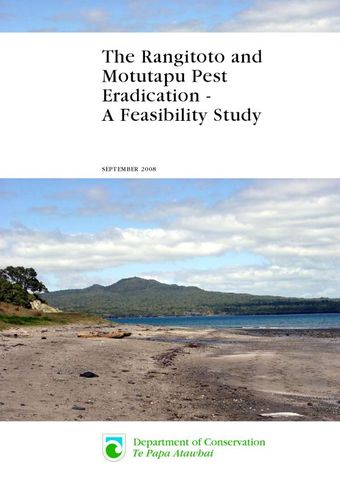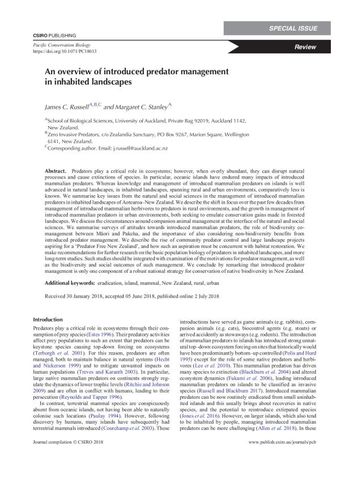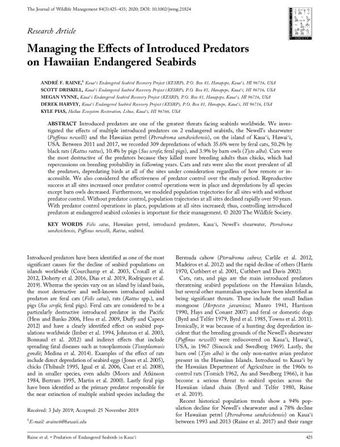Removing introduced hedgehogs from the Uists.
- Description:
- Hedgehogs (Erinaceus europaeus) are native to Great Britain but were introduced to the island of South Uist in 1974 and gradually colonised South Uist and Benbecula. In 1999 hedgehogs were confirmed in southern areas of North Uist. Hedgehogs eat the eggs and occasionally the chicks of waders, which breed at high densities in the Uists. Initial research by Royal Society for the Protection of Birds (RSPB) in 1998 suggested that predation by hedgehogs was having a significant effect on the wader populations in South Uist. In 2014, remote cameras were used on a sample of wader nests and found hedgehogs responsible for 52% of all predation in South Uist. The Uist Wader Project was set up in 2000 to remove hedgehogs from North Uist initially, but with a long-term aim to remove hedgehogs completely from the Uists. Various methods including lamping, trapping and the use of sni?er dogs were developed, trialled, and improved. We developed an Index of Abundance (IOA) of hedgehogs, using footprint monitoring tunnels. This IOA provides a means of confirming the impact of removal activities on the hedgehog population. In anticipation of scaling up, we carried out a removal trial on a two km² area at Drimore in South Uist. The trial demonstrated the e?ort required to reduce the abundance of hedgehogs from high density, 30 animals/km2, to zero and enabled the project team to estimate the resources required to eradicate hedgehogs from Benbecula, North and South Uist. The North Uist phase should be complete by the beginning of 2018, with only eight hedgehogs caught in 2016 and just one in 2017. Two years of monitoring are planned between 2018 and 2020, to confirm eradication.
- Display date:
- 2019
- Collections:
- Secretariat of the Pacific Regional Environment Programme (SPREP)
- Publisher:
- International Union for Nature Conservation (IUCN)
- Content partner:
- Secretariat of the Pacific Regional Environment Programme (SPREP)
- Availability:
- Not specified
-
Copyright status: All rights reservedFind out more about what you are able to do with this itemThis item is all rights reserved, with means you'll have to get permission from Secretariat of the Pacific Regional Environment Programme (SPREP) before using it. For more information, please see our use and reuse page.What can I do with this item?Non-infringing useNZ copyright law does not prevent every use of a copyright work, and this item may be hosted by an international institute or organisation. You should consider what you can and cannot do with a copyright work.No sharingYou may not copy and/or share this item with others without further permission. This includes posting it on your blog, using it in a presentation, or any other public use.No modifyingYou are not allowed to adapt or remix this item into any other works.No commercial useYou may not use this item commercially.
Related items
Welcome and warm Pasifik greetings
The information on this site has been gathered from our content partners.
The names, terms, and labels that we present on the site may contain images or voices of deceased persons and may also reflect the bias, norms, and perspective of the period of time in which they were created. We accept that these may not be appropriate today.
If you have any concerns or questions about an item, please contact us.



